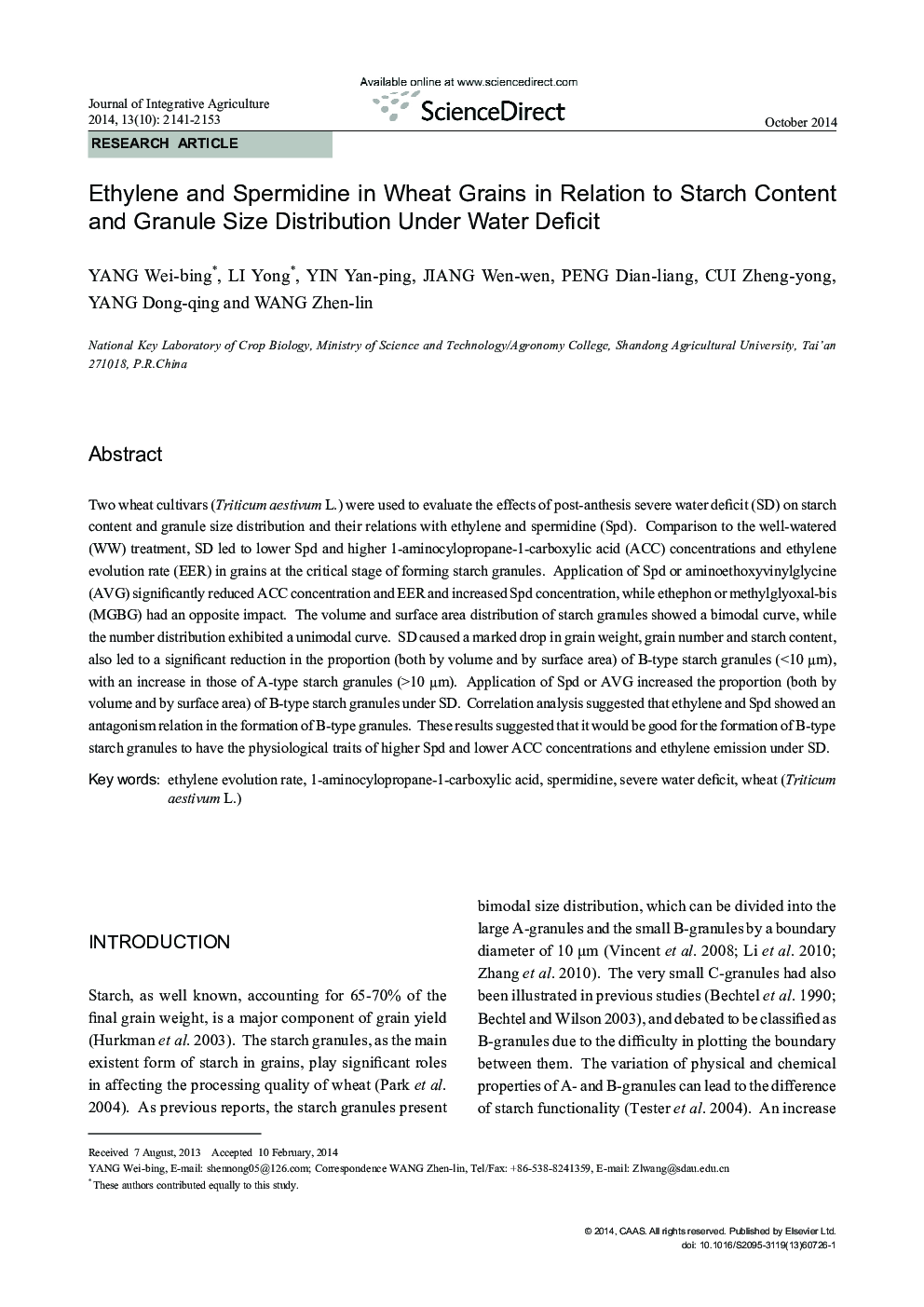| Article ID | Journal | Published Year | Pages | File Type |
|---|---|---|---|---|
| 4494486 | Journal of Integrative Agriculture | 2014 | 13 Pages |
Two wheat cultivars (Triticum aestivum L.) were used to evaluate the effects of post-anthesis severe water deficit (SD) on starch content and granule size distribution and their relations with ethylene and spermidine (Spd). Comparison to the well-watered (WW) treatment, SD led to lower Spd and higher 1-aminocylopropane-1-carboxylic acid (ACC) concentrations and ethylene evolution rate (EER) in grains at the critical stage of forming starch granules. Application of Spd or aminoethoxyvinylglycine (AVG) significantly reduced ACC concentration and EER and increased Spd concentration, while ethephon or methylglyoxal-bis (MGBG) had an opposite impact. The volume and surface area distribution of starch granules showed a bimodal curve, while the number distribution exhibited a unimodal curve. SD caused a marked drop in grain weight, grain number and starch content, also led to a significant reduction in the proportion (both by volume and by surface area) of B-type starch granules (<10 μm), with an increase in those of A-type starch granules (>10 μm). Application of Spd or AVG increased the proportion (both by volume and by surface area) of B-type starch granules under SD. Correlation analysis suggested that ethylene and Spd showed an antagonism relation in the formation of B-type granules. These results suggested that it would be good for the formation of B-type starch granules to have the physiological traits of higher Spd and lower ACC concentrations and ethylene emission under SD.
